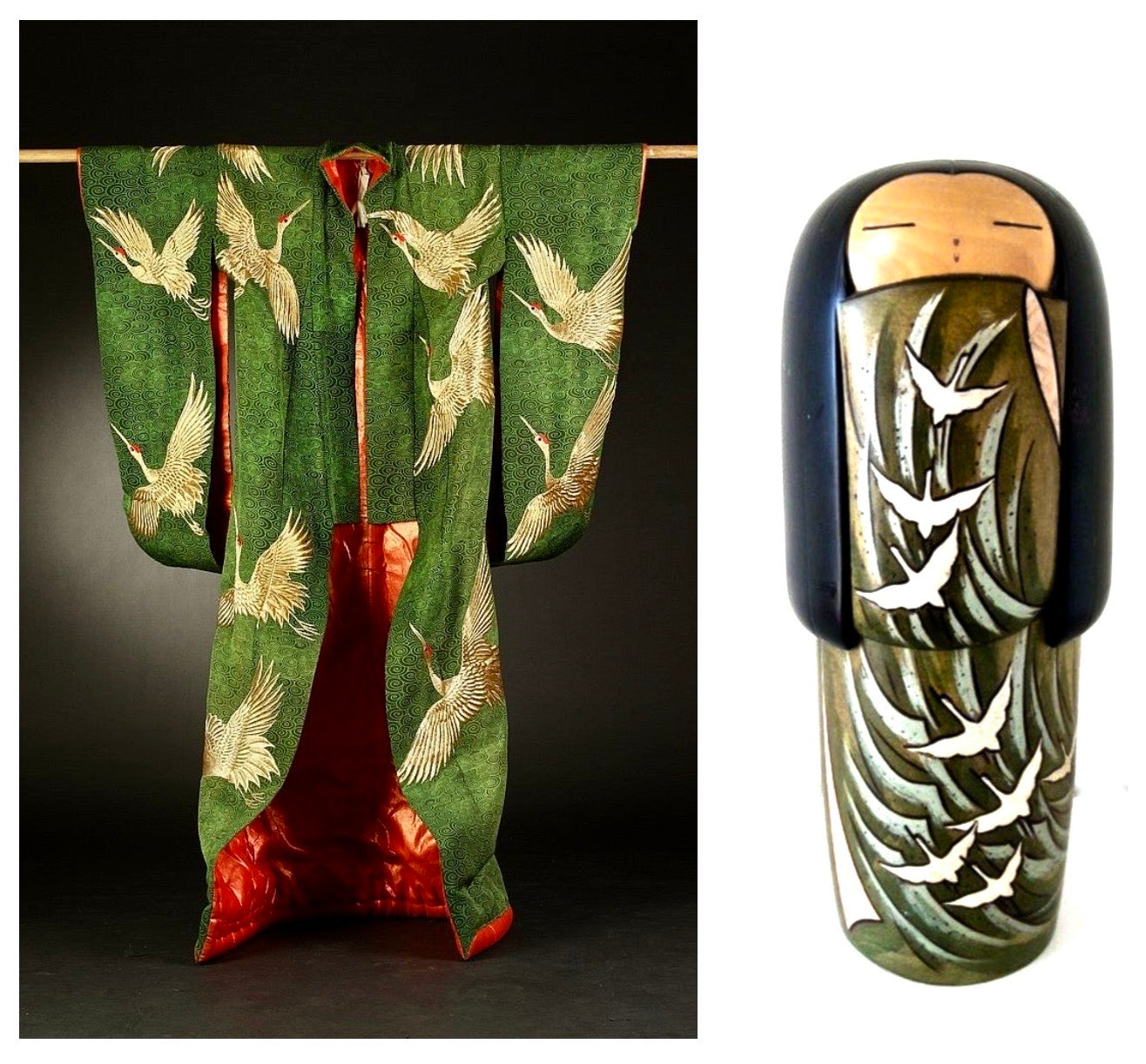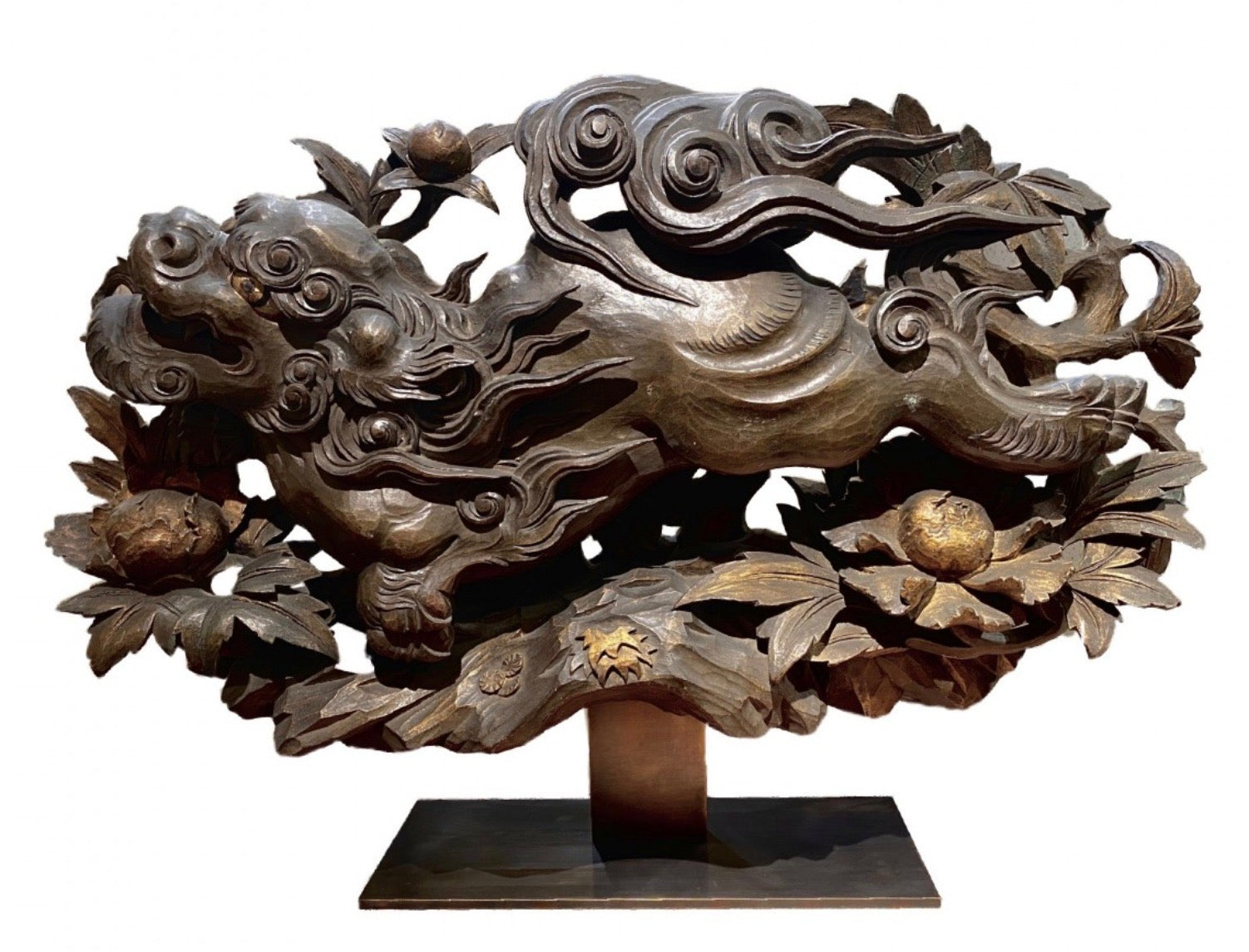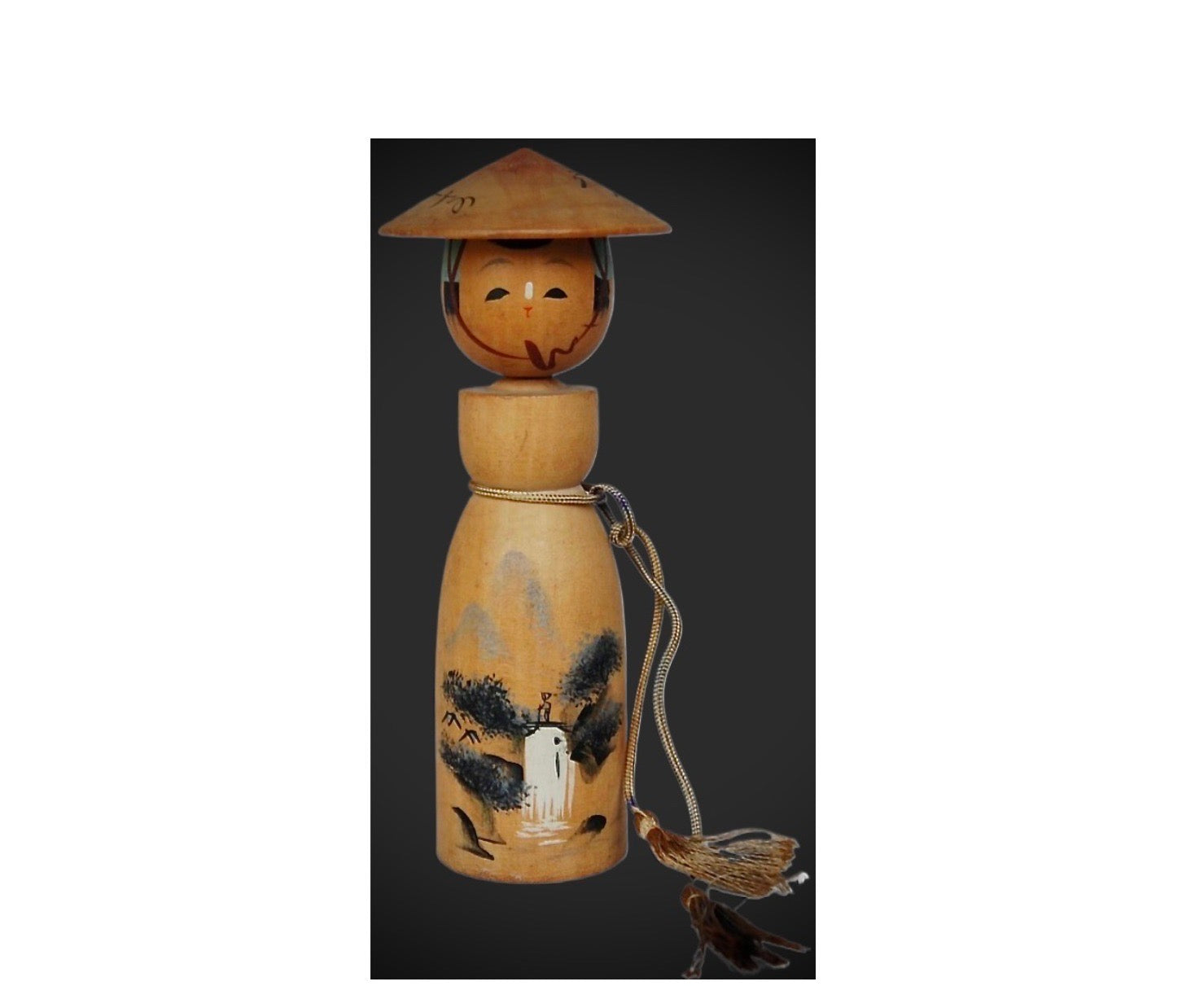Kokeshi woodcraft and fashion have a positive long-standing relationship since Kokeshi was first introduced to the Japanese travelers and utilized motifs still used today. Intrigued with new forms, colors, patterns, and broader socio-cultural references, the carvers of these beautiful wooden forms have regularly turned towards textile arts for their sartorial inspiration. Traditional Kokeshi design, as a living form of art, deserves to be analyzed within the same frameworks the as textile history, since they are intimately related.
Japanese textiles, specifically Kimono, Fukusa, Obi and Haori have provided a canvas for graphic design inspiration, patterns, and color throughout Japan’s centuries of creativity, representing fashion as a central motif on the body of these beautiful wooden forms. Woodturners have always found inspiration for their three-dimensional forms which have been imbedded with Kimono artists since early times. They have been able to highlight their interest in this world by integrating the influence of these encounters in each creation. They support the idea that each lathe-turned form represents a textile artist’s link with each painting of these beautiful carved forms.
However, woodcraft can sometimes feel far from being considered an art, despite the many links between woodcarvers and textile artists. Those of us who have been following the evolution of both Traditional and Sosaku Kokeshi believed that Kimono fashion and woodturning are, and will remain, two worlds in their own right. Indeed, this is due to the fact that contemporary Kokeshi creation has the ability to continue to carry a basic theme while fashion is continuously renewed to meet the ever-changing interests of society. Doll design and fashion share similar values based on cultural history, and represented in a variety of artistic forms and media, thus intimately linking two artistic expressions.
Knowing about the evolution of Kokeshi from a regimented artistic motif to a more abstract, free-form graphic design helps the collector add a breadth and depth to ones holdings. Knowing how Japanese textile artists experimented with different materials, construction techniques, and color, gives a basis for the Kokeshi artist and introduces his/her own representation the media of wood.
Kimono, the official costume of Japan are garments worn by men, women, and children and have found their way into the decoration of the very first examples of Kokeshi. Over time, a contest developed among the nobility and upper classes as to who could display the most elaborate designs on the works of the most famous artists. This is why the Kimono, which was a highly prized heirloom, became the inspiration for the majority of woodworkers creating Kokeshi dolls. Whether the motif be in painted or in carved form, many of the works of masters of Kokeshi-making survived as a living monument to Japan’s artistic past.
MOTIF depicted on Kokeshi Figures
The history of the Kimono’s development can be traced to the Nara period, (710-784). This was a time of great influence by T'ang Dynasty, China. Consequently, the long, flowing Chinese robe became the model for the early Kimono prototype throughout Japan. During the Heian period, Japan closed its doors to China and her direct influences, and, as a result, the first distinctive Japanese art forms began to emerge. Both the front and the back of many of the Kokeshi were partially or totally decorated with water color or enamel mediums, although some artists chose to only emphasized carving with with selected of the textured surface fully colored. The Shibori-style and Ikat-style motif focused on both the coloration, graphic design, and construction to identify this new style of textile art and in turn Kokeshi decoration.
Representations of classic clothing with graphic features were: Heian traditional garments including Juunihitoe, (layered robes), and Sokutai, (formal and round collared jackets). Men and women wearing the traditional rice-straw and feather snow coats called “Mino” and Susanoo-no-Mikoto (God of storms and sea), along with period hairstyles including the unique ‘Mage” or ‘Bob’, sere the looks the times.
On the body of Sosaku Kokeshi, the following motifs became the focus, depending on the artist/carvers message each was trying to share as part of their wood creations again being an important part of the Japanese heritage/culture:
Four Seasons Motif: Clouds, (Kumo), Sun, (Taiyō) & Sunrise (Hinode) cherished for long life & virtue); Chrysanthemum (kiku); Plum Blossom (Ume); Cherry Blossom (Sakura); Camellia Blossom (Tsubaki); Peony, (Botan); Red Roses, (Akaibara), Daisy (Deijī), and Iris, (Shobu). Images of Nature Motif: Bamboo Culm and leaves; Pine Needles, Pine Cones; Forest; Seasonal Leaves; Grasses; Wheat; Paulownia leaves. Food-style motif: Eggplant, (Nasu); Bean, (Edamame). Animals and Sea Life Motif: Butterfly; Rare birds; Phoenix; Crane; Tonbo, (Dragon Fly); Macaque, (monkey), Dragon; ShiShi, (Lion Dog); Lobster; Koi, and finally, Animals of the Zodiac. Historical, Religious Figure Motif: Temples, the Torii Gate, Daruma Okame, and Kannon. Everyday Objects and Toys Motif: Sho-chiku-bai (three friends of winter), Coin-style motif, fans and Koma (spinning tops). Historical Landmarks motif: Waterfall, Streams, Waves; and Mt. Fuji. Abstract Graphic-style motif: geometric lozenge; diamond shapes; and stripes, (denoting a woman of high rank and wealth), Imperial Family Crest, and the Family (mon). Wood Motif: The type, color and wood grain through textural-style motifs are substituted for painted graphic designs on many Kokeshi forms.
And finally, We need to address color as a foundational motif as many were used to form the base body color of the doll. Colors have distinctive meanings in Japan and meant to produce a variety of sensations. Bright colors are used for spring; dark colors are used for winter and pastel colors are used for summer. For example: Blue, the ocean, sea life, and sky; Red, (Aka) wards off evil spirits; Pink: spring and youth; Purple: nobility and Yellow: harvest season. Below represent carvers and painters interpretations of these symbols on the body of Kokeshi.




